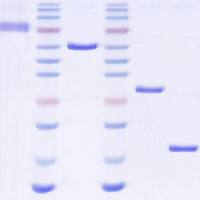Drug Transport Studies Using Quantitative Microdialysis
互联网
663
Cellular barriers in the central nervous system (CNS) present a formidable challenge in the delivery of drugs to the brain. These barriers include the blood-brain barrier (BBB) and the blood-cerebrospinal fluid barrier (BCSFB). Of these, given surface area and diffusional distance considerations, the BBB may be the more important barrier to drug transport to the bulk of the brain parenchyma. With the development of increasing numbers of new compounds to treat CNS diseases, quantitative methods to examine the transport of drugs in the CNS are necessary. Several methods in the past have been used, e.g., whole brain homogenates, quantitative autoradiography, in situ perfusion, noninvasive imaging techniques such as positron emission tomography (PET), and in vivo microdialysis. Although all these techniques have distinct advantages and disadvantages, this chapter will focus on the use of in vivo microdialysis in the rat brain to examine the mechanisms of drug transport through the barriers of the CNS.







